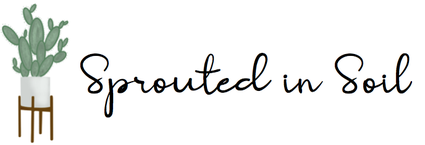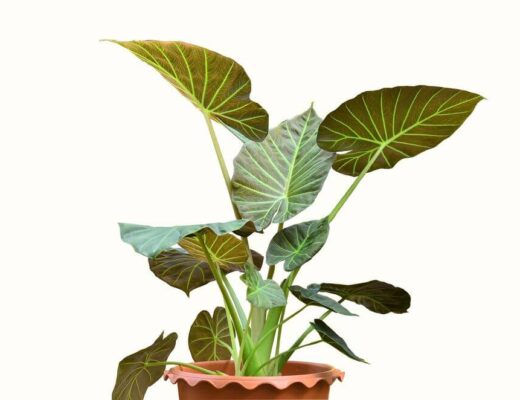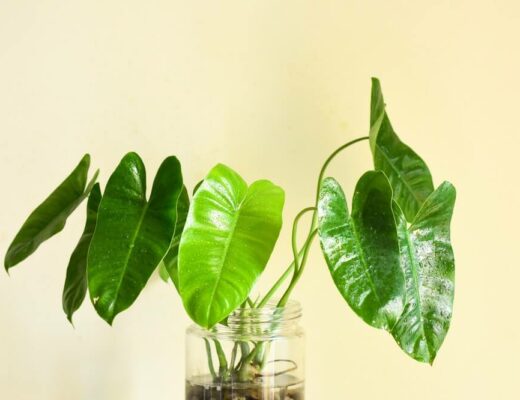The Hoya australis ‘Lisa’ is a fairly young cultivar with a very distinctive color pattern and palette that reminds me of a juicy summer watermelon! While the Hoya australis ‘Lisa’ is not a succulent, it shares plenty of characteristics, making this plant very low maintenance and easy to care for!
If you are interested in this plant, keep on reading this all inclusive Hoya australis ‘Lisa’ care guide!
Table of contents
The Hoya australis hails from, you probably guessed it, Australia. Densely distributed throughout the eastern regions of Australia, this plant will be found growing on the outer edges of rainforests. They prefer rocky soil and can thrive in areas that are highly exposed to the elements.
The Hoya australis ‘Lisa’ is a cultivar, or lab-created variety of the Hoya australis ssp. tenuipes. This means that H. australis ‘Lisa’ is not found naturally in the environment as it has been created by us, however it retains the hardy qualities of the original plant. It was created in the early 2000s!
What I love about this plant is that it is extremely forgiving if you forget to give it some love. It prefers to be on the dryer side and bounces back quickly if you go a little too long between waterings. The Hoya australis ‘Lisa’ is a great indoor plant, especially if you want to bring some tropical style to your home.
Quick Facts
- Common Name: Hoya australis ‘Lisa’, Hoya Lisa, Variegated Hoya Australis, Wax Plant Lisa
- Scientific Name: Hoya australis ssp. tenuipes ‘Lisa’
- Mature Size: three to ten feet long vines indoors
- Sunlight: bright, indirect light
- Water: when soil is dry halfway down pot or container
- Soil: well-draining, succulent soil
- Temperature: 60°F-80°F
- Propagation: layering or stem and leaf cuttings
- Hardiness Zone: 10-11
- Toxicity: toxic to humans and pets
Growth Pattern and Habits
This charming and colorful tropical plant is such a joy to watch grow. Most stores I have seen selling an Hoya australis ‘Lisa’ offer it in a pretty small pot; the plant is usually less than six inches in height. Once you bring it home, it is your job to provide it with all the care a Hoya australis ‘Lisa’ needs to reach its full potential.
Once established, a mature Hoya australis ‘Lisa’ can grow vines up to ten feet long. While this length is not usually seen indoors, a Hoya australis ‘Lisa’ kept as a houseplant can still have an impressive reach. Naturally, this plant will begin to grow upright. The vines will begin to curl over and cascade down once it reaches a certain height as it cannot support its weight.
You can absolutely grow your Hoya australis ‘Lisa’ in this manner and enjoy a waterfall of multi-colored leaves, however it will be much happier if you allow it to grow upwards. They are outstanding climbers and will absolutely thrive when trained to grow up a trellis, moss pole, or any other kind of plant support.

Like I mentioned before, the Hoya australis ‘Lisa’ has beautiful, waxy variegated leaves. You will note that the main colors are light and dark greens with splashes of peach and coral. Juvenile leaves will have a much stronger pink hue than mature leaves. Expect your ovate-shaped leaves to be three to four inches long and two inches wide.
While a well cared-for Hoya australis ‘Lisa’ will grow abundantly in the spring and summer, it prefers to be slightly root bound. Because of this, it is suggested that you should only repot a Hoya australis ‘Lisa’ every three to four years despite its rapid growth during the warm months.
Hoya australis ‘Lisa’ blooms are not common when this plant is grown indoors, however it is possible when grown in optimal conditions. If you are lucky enough to see your Hoya australis ‘Lisa’ flower, you will not be disappointed. These fragrant, star-shaped flowers are white with hot pink centers and grow in groups. I haven’t yet been successful in getting my plant flower, but I have read that Hoya australis ‘Lisa’ blooms have a wonderful chocolate vanilla scent.
To encourage your Hoya australis ‘Lisa’ to flower, I suggest bringing it outside once night time temperatures stay above 60°F. Place in an area that receives direct morning light but is shielded from the afternoon sun. The changes in temperature throughout the day may help “trick” your plant into flowering as this mimics its natural habitat. This is even more likely if you live in a naturally humid climate!
Ok with all that fun stuff said, let’s get into the nitty gritty on how to care for a Hoya australis ‘Lisa’.
Sunlight
The perfect light condition for a Hoya australis ‘Lisa’ is bright, indirect sunlight. This can be achieved in a couple of ways and best mimics the light exposure it would receive in nature. The Hoya australis ‘Lisa’ grows up tree trunks so is almost always partially shaded from direct sun. This is the environment we want to mimic.
In general, the Hoya australis ‘Lisa’ likes to be in rooms that are bright throughout the day, so placing it in a room with one window or in a dark corner is not ideal. This beauty will enjoy being housed in a bright, east facing window directly next to the glass. This will allow it to receive direct light in the morning when the sun is at its weakest.
You can also choose to place it in a south-facing window (north-facing if you live in the southern hemisphere), a couple feet back so afternoon sunlight does not directly reach its foliage. Alternatively, you can hang a sheer curtain to soften the light.
Pro Tip – If you notice brown, crispy leaves, especially around the margins, then your Hoya australis ‘Lisa’ may be receiving too much direct sunlight.
During the colder months when days are short, it is a good idea to supplement natural light with a grow light.
Water
It is important to understand how to water a Hoya australis ‘Lisa’. While it hails from the rainforests of Eastern Australia, it prefers much less moisture than you may think. Actually, the Hoya australis ‘Lisa’ thrives on a little bit of neglect thanks to its waxy leaves that retain water incredibly well.
I tend to only water my Hoya australis ‘Lisa’ when the top half of the soil is dry to the touch. During the growing months, this usually ends up being once every week and a half to two weeks, though this range can vary greatly depending on your climate and relative humidity.
To mimic its natural environment, it is recommended that you water your Hoya australis ‘Lisa’ by thoroughly drenching the soil. Place its container in a sink or tub and gently pour water around the base of the plant. Continue to do so until you note water flowing out the bottom drainage hole. At this point, stop watering and allow excess water to drain before replacing the Hoya australis ‘Lisa’ in its home!
Keep an eye on how your plant’s leaves look. Yellow leaves that are scattered throughout the entire plant may indicate overwatering. They will feel slightly mushy. On the other hand, crinkled, thin, fragile leaves indicate that your Hoya australis ‘Lisa’s soil is too dry.
Soil
It’s only natural to talk about soil after discussing how to water a Hoya australis ‘Lisa’. Soil and water go hand in hand, as soil can directly affect moisture levels regardless of your watering habits. Soil composition dictates not only how water is retained but how much oxygen is able to be taken up by the roots.
The best Hoya australis ‘Lisa’ is a three part equal mixture of organic potting soil, coco coir and perlite. When newly potting this plant, I also add a one inch layer of worm castings to the top layer of soil as a type of organic fertilizer. I replenish the soil with a new layer of worm castings about twice a year.
Temperature and Humidity
The Hoya australis ‘Lisa’ is happiest in temperatures ranging from 60°F to 80°F with humidity levels averaging around 40-60%. You can choose to keep your plant indoors year round without needing to worry too much about its environment because it does just fine in normal indoor “climates”.
Greenhouse cabinets are super in right now and the Hoya australis ‘Lisa’ would grow really well when kept in one. I suggest using a humidity sensor to prevent humidity levels from climbing too high!

If you live in a more humid climate, you may choose to let your Hoya australis ‘Lisa’ enjoy a bit of outdoor life! Place this plant in an area that is shaded from the direct rays of the sun, especially in the afternoon when temperatures are the hottest.
As with all plants, be sure to inspect your Hoya australis ‘Lisa’ for any pests before bringing it back inside. For a little extra assurance, I even quarantine my plants for a couple weeks, just to see if anything creeps out!
Fertilization
Most Hoyas thrive on a little bit of neglect and don’t like to be fussed over. Because of this, I rarely fertilize my Hoya australis ‘Lisa’. Instead, I throw a fresh handful of worm castings (a great organic “fertilizer” that slowly releases much needed nutrients) every spring. That’s it!

Additional fertilizer can be helpful if you are trying to encourage your Hoya australis ‘Lisa’ to bloom. Flowers generally bloom on a well established, mature (at least five years old!) Hoya australis ‘Lisa’ plant.
Choose a liquid fertilizer that is higher in phosphorus than nitrogen or potassium because phosphorus stimulates blooming at a greater percentage than the latter two. Dilute to half strength and fertilize once in the spring and once in the summer.
Propagation
Let’s take a detailed look at how to propagate a Hoya australis ‘Lisa’! Using stem cuttings is the most successful way to carry out Hoya australis ‘Lisa’ propagation. Cuttings are always abundantly available to obtain because the Hoya australis ‘Lisa’ is a fast grower during its growing season. Collect the cuttings obtained from a pruning session and you will have a handful of material to work with!
Let’s first start by discussing how to propagate your Hoya australis ‘Lisa’ in soil:
- Prune stems that are moderate in size. The cutting should have at least two pairs of leaves. Be careful when handling the cuttings as the sap can be mildly irritating to the skin.
- Carefully remove the bottom most pair of leaves to expose a growth node. This is where the magic happens!
- Plant the cuttings in damp soil. Ensure the exposed growth node is completely covered by the soil.
- Keep in a warm, bright area. To maintain appropriate humidity and moisture levels, you can choose to mist the soil daily (or more if needed) or you can cover the soil with loosely placed plastic wrap.
- Within a few weeks new roots should begin to appear. At this point, transplant each newly rooted cutting and place it in its own container. Tend to this plant as you would a mature Hoya australis ‘Lisa’.
I have had great success when propagating Hoya australis ‘Lisa’ in soil but have also had good luck in LECA. Short for lightweight expanded clay aggregate, LECA are small, super absorbent clay balls that are an excellent growing and propagation medium.
LECA provides the necessary moisture while allowing for sufficient airflow to keep a plant’s roots healthy. LECA also provides support and structure.

The following steps provide you with the information you need to successfully propagate your Hoya australis ‘Lisa’ in LECA:
- Newly bought LECA must be rinsed of residue prior to using to remove the excess dust that accumulates when the pebbles are kept in a bag. Rinse until the water is mostly clear.
- Soak LECA in clean water for a couple hours.
- When you are ready to propagate, fill a container (I prefer clear glass so you can monitor root growth!) half-way with LECA. Gently place your cutting into the LECA, adding more clay balls as necessary to keep the cutting upright.
- Add enough water to fill approximately ⅓ of the container. Monitor the water level and water quality to ensure the appropriate water level is maintained and it doesn’t become discolored.
- As when using soil as a growth medium, you should see roots appear within a couple of weeks. At this time, you can choose to keep growing your Hoya australis ‘Lisa’ in LECA or you may choose to transplant into fresh soil.
Common Issues
The most common issues plant parent’s will experience when growing a Hoya australis ‘Lisa’ are pests and root rot leading to fungal diseases. Luckily, I have tips to share to prevent either from getting out of hand.
Pests
The two most common pests that like to snack on and infest Hoya australis ‘Lisa’ plants are mealybugs and aphids. Aphids are small, soft-bodied insects with pear/oval-shaped bodies. Depending on the species of aphid, you may note that they can be green, yellow, black, or brown in color. Aphids like to huddle in groups.
Mealybugs are also often seen grouped together along stems and leaves. The most obvious sign you have a mealybug issue is the appearance of a white cottony substance. This substance is actually a protective wax secreted by mealybugs and it makes identification easy.
If you notice any insects on your plants, it’s time to take action. First you must quarantine this plant away from all others to prevent spread. Insect removal comes second. I suggest removing all signs of the insects with an alcohol soaked cotton ball. Gently swipe all contaminated areas with the cotton ball.
After this initial decontamination, treat the entire plant with a neem-oil spray. Repeat both steps weekly until the infestation is gone.
To prevent any pests from taking up residence, inspect all of your plants closely when watering. Spray plants with a gentle coating of neem oil monthly as a preventative measure.
Root Rot
Root rot is caused by overwatering, poor soil, and/or improper drainage. It can also be a combination of all three. Signs of root rot include yellowing leaves, mushy plant tissue, and dark lesions or spots. Roots will be mushy and black. Root rot can lead to fungal or bacterial infections.
Prevent root rot from damaging your Hoya australis ‘Lisa’ by practicing good watering habits. Always test the soil prior to watering and only water when the top half of the soil is dry to the touch. Your Hoya australis ‘Lisa’ should be planted in well-draining soil and kept in a container with drainage holes.
Depending on the severity of root rot, you may have to remove your plant from its container and cut away the rotten roots. Allow the remaining, healthy roots to dry out before planting in a sanitized pot with fresh, dry soil.
Toxicity
The Hoya australis ‘Lisa’ is considered toxic to both humans and pets. This is due to its latex-containing sap. It is mildly irritating to the skin and stomach, if ingested by humans or pets. If you or anyone you know has a latex allergy, approach this plant with caution!
Wrapping Up
Hoya australis ‘Lisa’ is a cultivar that was created specifically for household enjoyment so will thrive in any bright indoor area. To prevent issues down the road make sure that you water your Hoya australis ‘Lisa’ appropriately and use only well-draining soil.
Enjoy this plant indoors all year round or outdoors during the spring and summer seasons! Thanks for checking out all the information I provided on Hoya australis ‘Lisa’ care.




